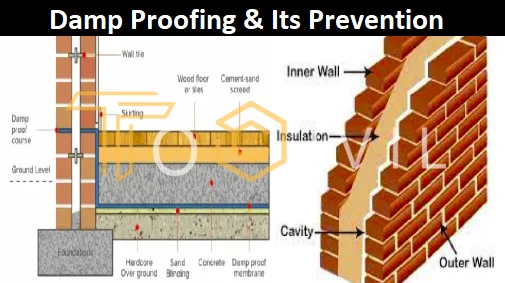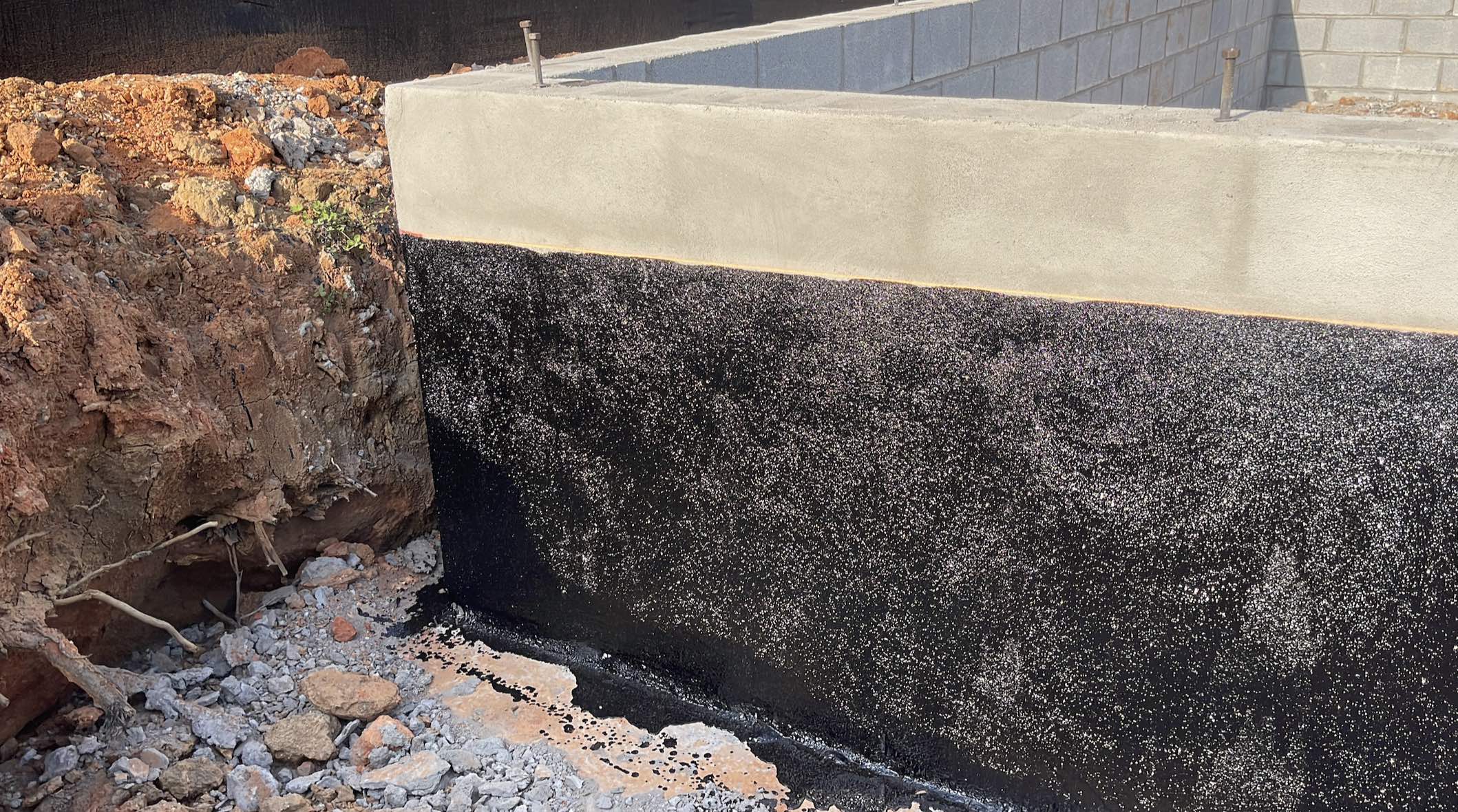Solving condensation problems permanently with mould treatment newcastle
Solving condensation problems permanently with mould treatment newcastle
Blog Article
Understanding the Relevance of Damp Proofing in Averting Structural Damage
Moist proofing works as an important defense against moisture infiltration in structures. This safety measure can avoid significant structural damage, yet many homeowner remain not aware of its relevance. Recognizing the signs of dampness and understanding the different options readily available can be critical. However, disregarding damp proofing can result in serious repercussions. What are the particular dangers and options that residential or commercial property owners should take into consideration?
What Perspires Proofing and Exactly How Does It Function?
Wet proofing acts as an important obstacle against wetness intrusion in structures. damp proofing newcastle. This process entails applying details materials and methods to protect against water from permeating wall surfaces, floors, and various other architectural components. Commonly, wet proofing can be accomplished through the installment of damp proof membranes, coatings, or using specialized sealants.These approaches work by creating a safety layer that prevents moisture movement, guaranteeing that the interior setting continues to be completely dry and healthy. Wet proofing is particularly vital in locations prone to high humidity or groundwater, as it helps preserve the honesty of the structure over time.Moreover, reliable wet proofing contributes to energy effectiveness by protecting against warmth loss connected with wet settings. By attending to possible moisture issues before they rise, damp proofing functions as an aggressive action in guarding buildings from the harmful results of water damage, eventually extending their life expectancy and preserving their worth
Usual Indicators of Moisture in a Structure
Wetness problems within a building can show up through a number of recognizable signs that suggest the existence of wetness. One prominent indication is the appearance of water discolorations on wall surfaces or ceilings, which often shows wetness infiltration. In addition, bubbling or peeling paint can suggest that excess humidity is entraped below the surface, bring about damage. An additional typical indication is the existence of mold and mildew, which thrive in wet problems and can frequently be identified by their moldy smell. An increase in humidity degrees can create condensation on windows and other surfaces, highlighting moisture issues. Deformed or unequal flooring may indicate underlying wetness that endangers architectural stability. Recognizing these indicators early can aid reduce prospective damage and keep a risk-free living environment. Routine inspections and prompt activity are important in attending to moisture concerns before they rise.
The Risks of Disregarding Damp Proofing
Overlooking moist proofing can cause substantial threats to a structure's architectural integrity, as wetness build-up may damage walls and structures. In addition, long term wetness creates an atmosphere for mold and mildew growth, positioning severe carcinogen to passengers. Attending to these risks is crucial for ensuring both safety and long life of the residential property.
Architectural Honesty Threats
When property owners neglect the significance of effective wet proofing, they subject their properties to substantial architectural integrity hazards. Extended moisture seepage can lead to the growth of mold and mildew, which weakens foundational aspects and can endanger overall stability. Furthermore, excess wetness can deteriorate concrete and brickwork, leading to fractures and architectural failures. Wood elements are especially vulnerable; they can rot and lose load-bearing capacity, positioning serious dangers to the structure's framework. Moreover, without treatment moist problems might bring in insects, such as termites, which better exacerbate structural deterioration. Eventually, neglecting damp proofing procedures can cause pricey fixings and prospective safety risks, emphasizing the essential duty of positive moist monitoring in preserving the integrity of residential properties.
Health Risk Concerns
Just how can an apparently small oversight result in serious wellness threats? Ignoring wet proofing can develop a setting for mold and mildew development, which postures considerable health and wellness risks. Mold spores can trigger allergies, breathing problems, and other health difficulties, particularly in prone populations such as youngsters, the elderly, and individuals with pre-existing problems. Additionally, relentless wetness can bring in parasites like insects and rats, which carry diseases that further endanger health. The presence of dampness likewise contributes to a decline in interior air high quality, intensifying asthma and various other breathing ailments. Consequently, the failing to deal with wet issues not only endangers architectural honesty however likewise threatens the health of owners, highlighting the important demand for efficient damp proofing procedures.
Different Sorts Of Damp Proofing Solutions
Although various aspects can add to damp problems in structures, picking the appropriate damp proofing remedy is important for maintaining architectural integrity. Several alternatives are readily available, each customized to specific conditions.One common solution is a damp-proof membrane (DPM), generally made from polyethylene or bitumen, which is installed in floors and walls to protect against moisture access. An additional choice is damp-proof courses (DPC), which are layers of water-proof product placed within wall surfaces to obstruct climbing damp.Chemical damp proofing entails injecting waterproofing chemicals into walls to create an obstacle against wetness. Furthermore, external therapies such as tanking, which entails applying a water resistant layer to the beyond structures, can be efficient in avoiding water penetration.Each remedy has its advantages and is chosen based on the structure's particular problems, environmental conditions, and long-lasting upkeep considerations, guaranteeing ideal protection against damp-related damage.

The Cost of Damp Damage vs. Prevention
Understanding the economic effects of moist damage compared to avoidance highlights the importance of aggressive actions. The expenses related to wet damages can be considerable, consisting of repair services to structural components, mold and mildew remediation, and possible health-related expenses. Home owners may face considerable economic strain if comprehensive damages occurs, causing increased insurance policy costs and shed residential property value.In contrast, investing in damp proofing solutions is generally far more cost-effective. First costs for avoidance techniques, such as boosting or mounting damp-proof membranes drainage systems, are commonly outweighed by the long-term cost savings from preventing expensive fixings. Additionally, avoiding moist concerns can enhance a building's total worth and appeal, making it a smart investment. When examining the expense of damp damage versus prevention, it becomes clear that taking aggressive steps can secure monetary rate of interests and preserve the integrity of the residential or commercial property in time.
Choosing the Right Damp Proofing Approach for Your Residential or commercial property
Which moist proofing technique is most appropriate for a particular home commonly depends upon various elements, consisting of the building's age, existing dampness concerns, and regional environmental problems. For older structures, traditional techniques such as bitumen membranes or cementitious coverings may be much more effective, as they can give a robust obstacle against increasing moist. On the other hand, more recent structures might gain from modern-day options like injected damp-proof training courses, which are much less invasive and can be customized to specific moisture challenges.Additionally, homes in locations with high water tables or heavy rains might need advanced methods, such as tooth cavity wall surface drainage systems or outside waterproofing. House owners must also take into consideration the certain products used in their structure's building, as some approaches might not work. Eventually, a complete analysis by a professional can guide homeowner in picking the most reliable damp proofing method tailored to their special conditions.
Preserving Your Damp Proofing System Gradually
Normal upkeep of a damp proofing system is essential for guaranteeing its lasting effectiveness and shielding a home from moisture-related damages. Homeowner must conduct routine examinations to recognize any kind of signs of wear or compromise in the damp proofing layer. This includes monitoring for splits, peeling paint, or mold and mildew development, which may suggest wetness intrusion.Additionally, it is recommended to tidy rain gutters and downspouts frequently to avoid water build-up around the foundation. If deterioration is observed.Engaging professional services for routine evaluations can better improve the toughness of the system, reapplying sealants or membrane layers might be needed. These professionals can provide insights into potential susceptabilities and recommend timely repairs.
Regularly Asked Concerns
The Length Of Time Does Damp Proofing Treatment Last Prior To Requiring Repair Services?
The durability of moist proofing therapy typically varies from 10 to three decades, relying on elements such as the approach used, environmental conditions, and upkeep methods. Normal evaluations can help establish when repair work may be essential.
Is DIY Damp Proofing Effective Contrasted to Specialist Solutions?
The efficiency of DIY moist proofing differs significantly. damp proofing newcastle. While some people may accomplish satisfying results, professional services generally guarantee extensive remedies, leveraging proficiency and quality products to stop future problems more reliably than a lot of do it yourself efforts
Can Damp Proofing Improve Indoor Air High Quality?
The concern of whether wet proofing can enhance interior air top quality arises frequently. Effective damp proofing minimizes dampness degrees, thereby lessening mold and mildew development and irritants, ultimately adding to a much healthier interior atmosphere for passengers.
Exist Specific Rules for Damp Proofing in Various Locations?
Regulations for moist proofing vary by area, often influenced by neighborhood building ordinance and ecological problems. Compliance warranties efficient dampness control, promoting and securing structures safety and security, which highlights read more the requirement for adherence to these certain regulations.

What Are the Long-Term Perks of Correct Damp Proofing?
The lasting advantages of appropriate wet proofing include improved structural honesty, minimized upkeep prices, improved indoor air quality, and increased property worth. These benefits add to a much healthier living environment and long term life expectancy of structures. Normally, moist proofing can be achieved via the setup of damp proof membranes, layers, or the use of specialized sealants.These methods function by creating a safety layer that inhibits dampness movement, making sure that the indoor atmosphere remains completely dry and healthy. Moist proofing is particularly essential in locations susceptible to high moisture or groundwater, as it helps keep the stability of the structure over time.Moreover, effective wet proofing adds to energy performance by protecting against warmth loss associated with wet environments. Overlooking wet proofing can lead to considerable hazards to a building's architectural stability, as dampness buildup may deteriorate structures and wall surfaces (damp specialist newcastle). Numerous factors can contribute to damp issues in structures, choosing the appropriate damp proofing remedy is crucial for preserving architectural integrity. Which damp proofing method is most suitable for a details property usually depends on different factors, consisting of the building's age, existing moisture concerns, and neighborhood ecological problems
Report this page